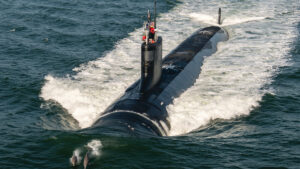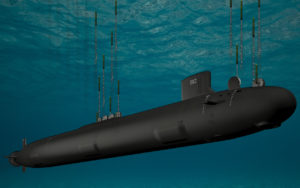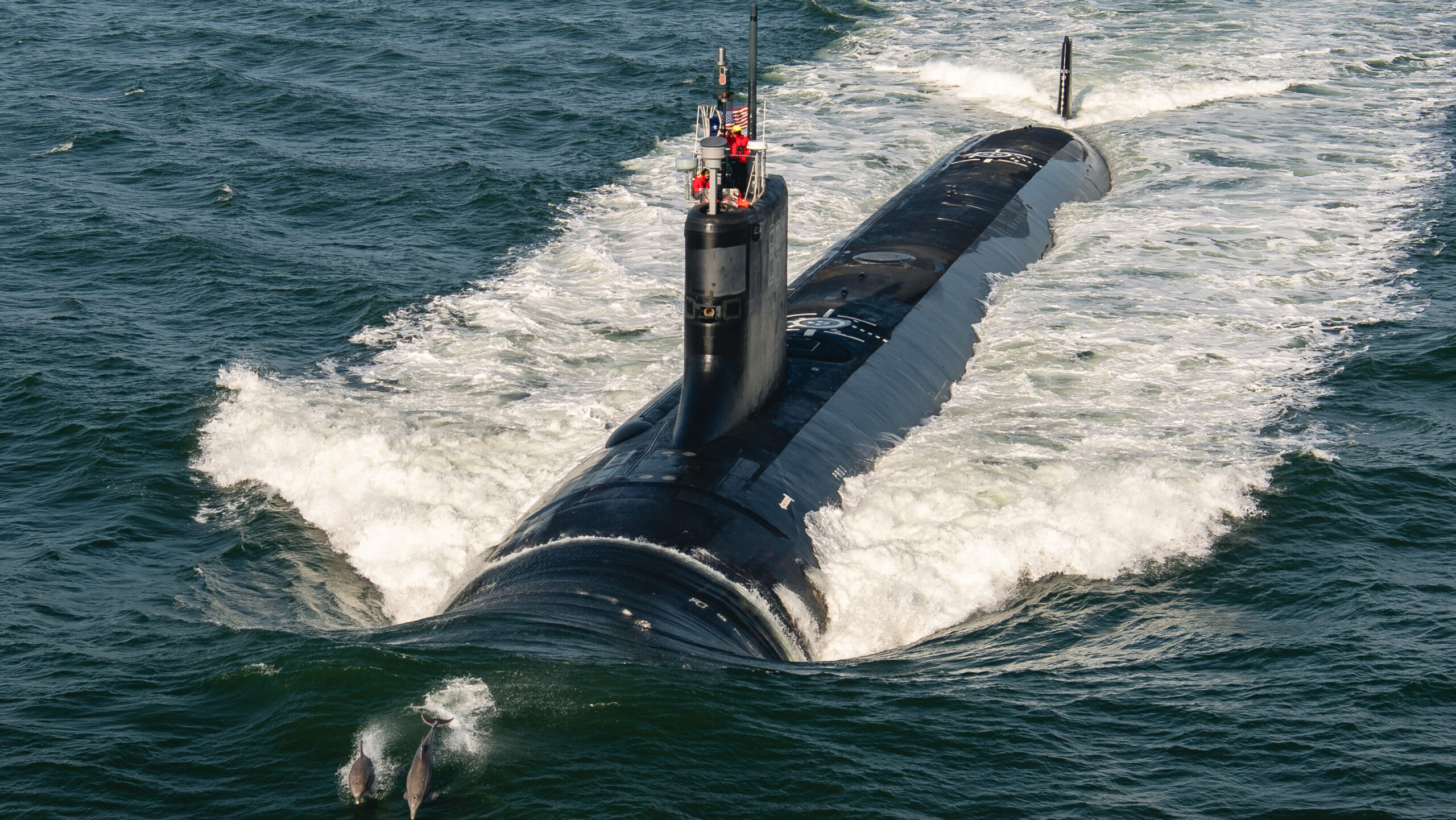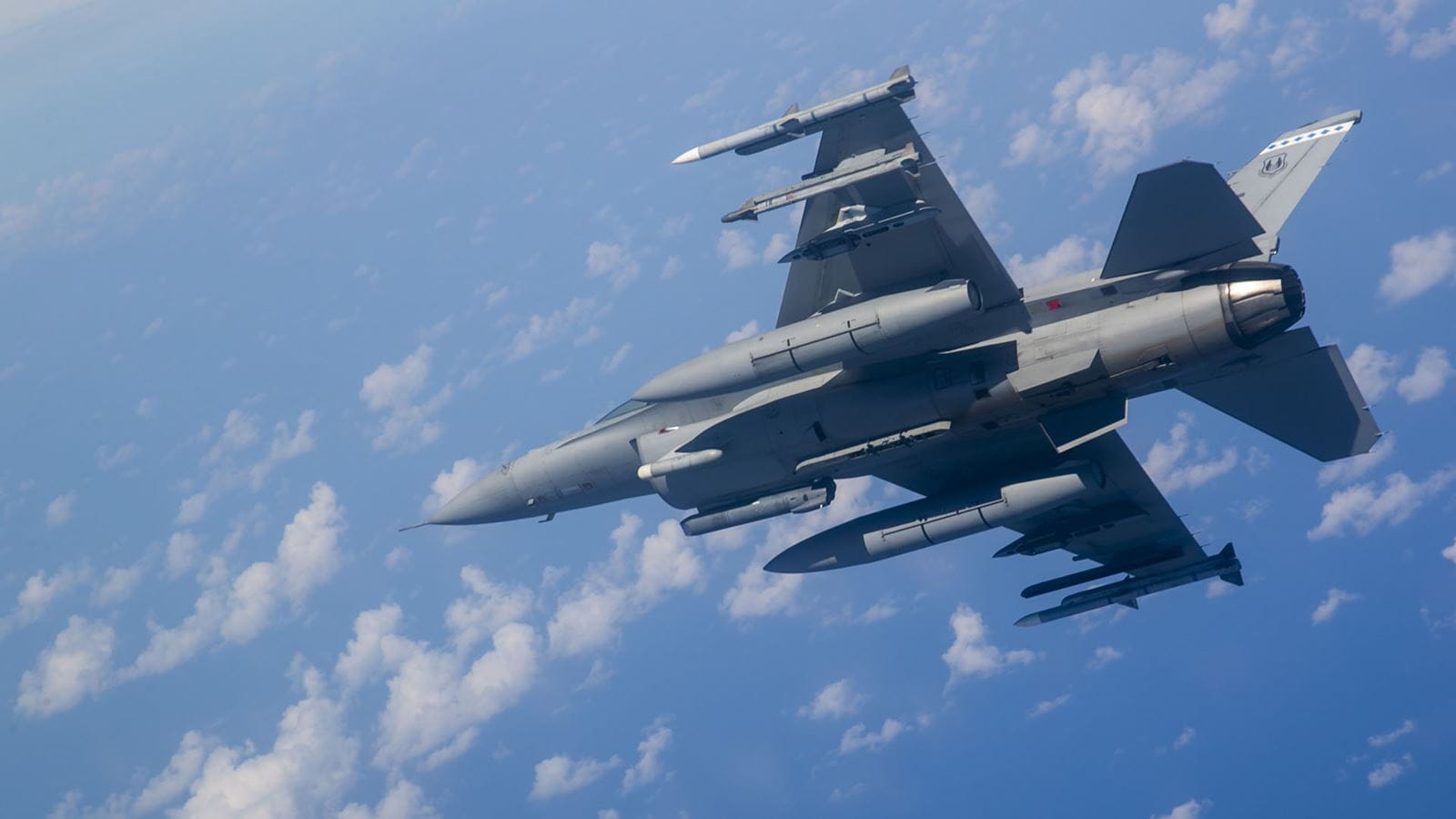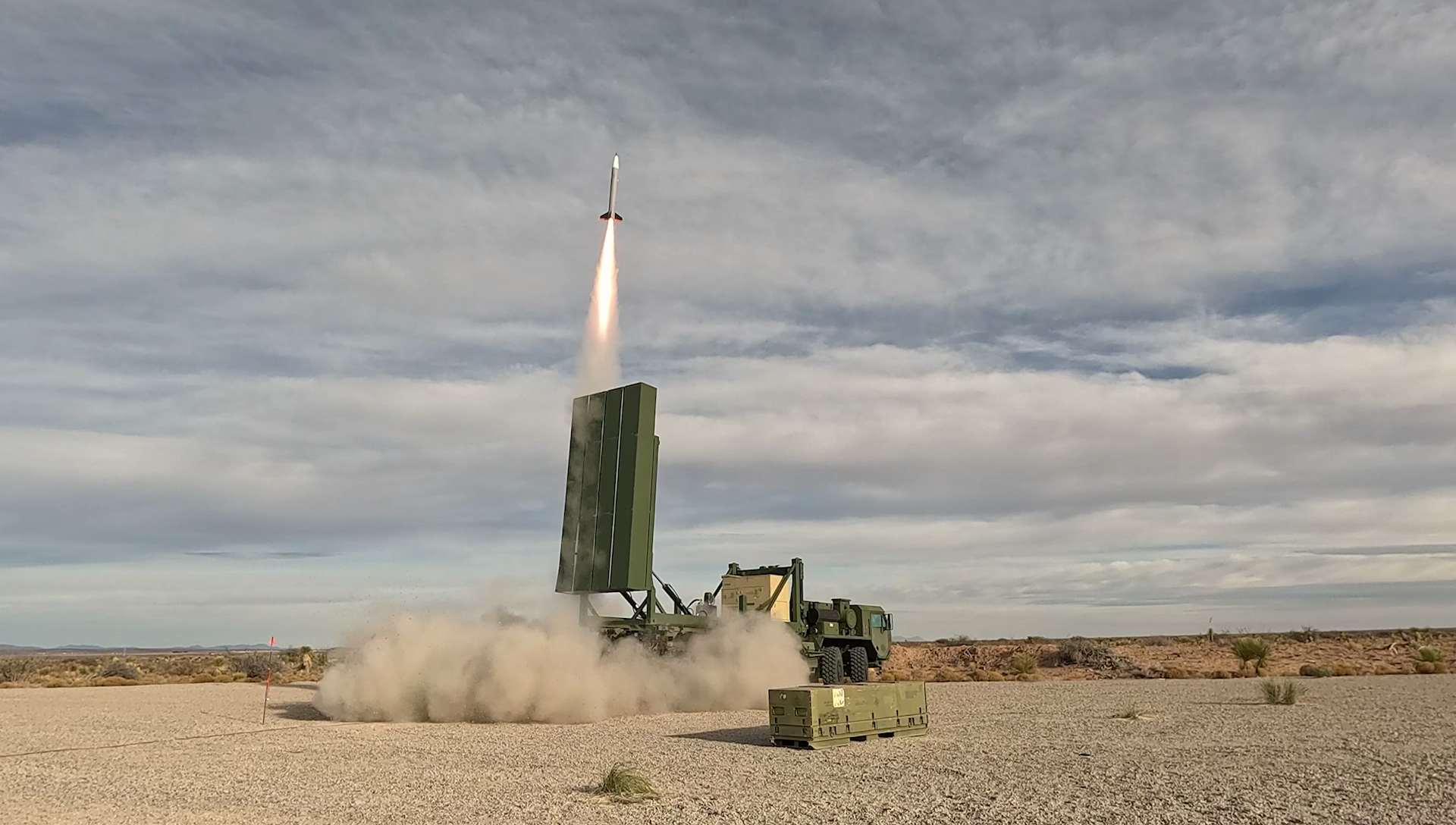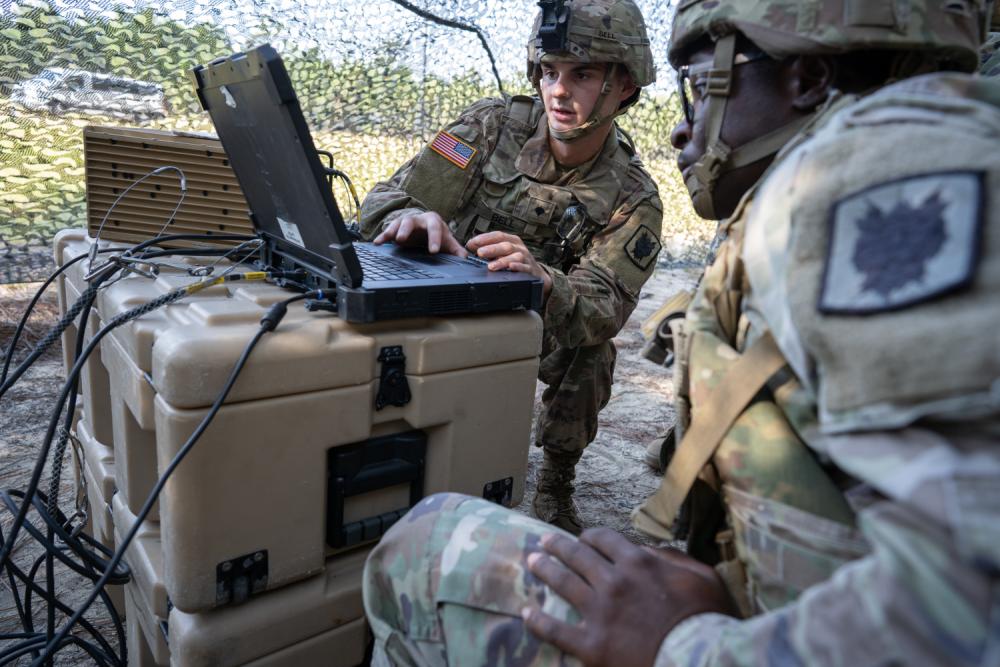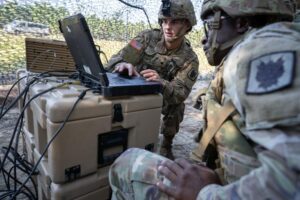Meink Meeting. The office of Senate Armed Services Committee Chairman Roger Wicker (R-Miss.) says that he met on Thursday with Troy Meink, President Trump’s nominee for Air Force secretary. Wicker’s office said that the two discussed “challenges and opportunities in the future Air Force fleet structure, including sixth-generation aircraft, unmanned systems, and American dominance in space.” Meink has served as the principal deputy director of the National Reconnaissance Office. Nuclear modernization, national missile defense, and the Air Force’s Collaborative Combat Aircraft are on Defense Secretary Pete Hegseth’s list of priorities that are to be safe from the 8 percent in annual cuts Hegseth has proposed, and Wicker indicated a similar train of thought–minus the manned Next Generation Air Dominance fighter–on Thursday regarding his priorities. “We have a lot of work to do to ensure that the Air and Space Forces own the skies and stars, including standing up the Next-Generation Air Dominance Fighter, accelerating the procurement of the Collaborative Combat Aircraft, preserving existing and effective Air Force fighters, and constructing platforms that will be critical to a future national missile defense system,” according to Wicker.
Probationary Blues.
The Defense Department last week said it expects to cut its civilian workforce between 5 and 8 percent, adding that beginning this week it will start to lay off 5,400 probationary workers followed by a hiring freeze. The department is “re-evaluating our probationary workforce” as it complies with President Trump’s direction for a more efficient and productive workforce, Darin Selnick acting under secretary of defense for personnel and readiness, wrote in a DoD-wide memo on Friday. The hiring freeze will remain in effect while the department analyzes its personnel needs, Selnick wrote. “As the Secretary made clear, it is simply not in the public interest to retain individuals whose contributions are not mission critical,” he said. “Taxpayers deserve to have us take a thorough look at our workforce top-to-bottom to see where we can eliminate redundancies.” Selnick also said employees will be “treated with dignity and respect” per usual.
IMX 2025. The largest Middle East maritime exercise, the International Maritime Exercise (IMX) 2025, concluded on Feb. 20. The ninth iteration of this 12-day event included 5,000 personnel from over 30 countries and organizations conducting exercises in the Persian Gulf, Gulf of Oman, Gulf of Aden, Red Sea and Indian Ocean. Exercise serials included diving, harbor security, mine countermeasures; unmanned systems and artificial intelligence integration; visit, board, search and seizure procedures; and global health management events.
New UAS. AeroVironment last week introduced its JUMP 20-X, a modular Group 3 unmanned aircraft system (UAS) designed for autonomous maritime and multi-domain operations. The fixed-wing JUMP 20-X uses artificial intelligence-powered autonomy for precise vertical take-off and landing on fast moving ships in rough seas, has a 13-hour endurance, is powered by a heavy fuel engine that can run on multiple fuel types, and features beyond-line-of-sight connectivity and a modular 30-pound multi-payload capacity for various missions, including precision strike. AV said its SPOTR-Edge computer vision technology also enables automated object detection and classification.
Logistics Help. Commercial prototypes successfully used to speed and automate Defense Department flight scheduling processes in support of global logistics operations are progressing into production contracts for wider use, the Defense Innovation Unit said last week. C3 AI developed an artificial intelligence-enabled dashboard for the Air Force’s Operational Energy Office to fuse aircraft sensor and mission data to analyze the effectiveness of operational energy initiatives, speeding up assessments from three days to two hours. The tool allows DoD to create more efficient flight protocols and lower fuel consumption while maintaining combat capability, DIU said. C3 AI has received a success memo for its prototype and is transitioning to production contracts that will allow other government organizations with similar needs to use the company’s solution.
…Google and AWS. Google Public Sector and Amazon Web Services also received prototype contracts in late 2022 for the flight scheduling effort. Google developed a user facing application for the Navy Air Logistics Office to create automate the creation of flight schedules based on lift requests, eliminating manual processes and optimizing fuel savings across the service. Google will receive bridge funding to transition to a production contract that will be used to mature into a potential program of record, DIU said. AWS modified its internal air logistics optimization engine the company developed for on-time global package delivery to support U.S. Transportation Command’s Air Mobility Command. DIU said AWS developed route options that reduced the number of aircraft needed by up to 50 percent, saved 12 percent in mission operation costs, and reduced delivery expenses by 10 percent. The AWS prototype is continuing through fiscal year 2025.
Space Milestones. Rocket Lab USA last Wednesday in New Zealand launched its 60th Electron rocket, lifting BlackSky Technology’s first Gen-3 Earth observation satellite into orbit. For Rocket Lab, the mission came 10 days after its previous Electron launch from the same complex, showcasing its increasing launch cadence. For BlackSky, which has used the Electron launch vehicle nine times since 2019, the successful orbiting of its 35-centimeter electro-optic imaging satellite “represents a major inflection point for our global defense and intelligence customer base as BlackSky introduces very high-resolution Gen-3 capabilities to our high-frequency, low-latency monitoring constellation,” Brian O’Toole, the company’s CEO, said in a statement.
GOLUM. U.S. Special Operations Command’s SOFWERX innovation arm and the Army are seeking a solution for a Gliding Offensive Lightweight Unmanned Munition (GOLUM) assessment event with an eventual goal of fielding a low-cost, lightweight, precision, unpowered, glide munition for launch from a lightweight uncrewed aircraft to fill a need for glide munitions smaller than the GBU-69 for Special Operations Forces. Submissions are due by March 10 and respondents with proposals deemed favorable will receive invitations by around March 18 to discuss their offers in April at the assessment event in Tampa, Fla. The government will use the event to negotiate potential awards.
Autonomy Management. Israel’s Elbit Systems last week unveiled Dominion-X, an open architecture platform for autonomously managing unmanned systems. “Dominion-X fosters human-swarm teaming, facilitating seamless interaction, influence, and behavioral inference,” Elbit said. “It delivers large-scale, distributed sensing capabilities with advanced information fusion and distillation for superior situational awareness and terrain dominance.”
DDG-116. The Arleigh-Burke class guided missile destroyer USS Thomas Hudner (DDG-116) left Naval Station Mayport, Fla., for the U.S. 4th Fleet area of operations on Feb. 18 to deploy to the U.S. Southern Command area to support bilateral and multinational maritime operations. Previously, DDG-116 finished serving an eight-month deployment with the Gerald R. Ford Carrier Strike Group (CSG) in January, where it served as an air defense unit off the coast of Israel.
FMD DDG Equipment. Fairbanks Morse Defense’s American Fan business unit won multiple purchase orders to provide cooling and ventilation fans for 10 Flight III Arleigh Burke-class destroyers, the company said on Feb. 18. This includes gas turbine room blowers; collective protective system fans for ventilation against nuclear, biological and chemical substances; and vaneaxial and centrifugal fans for machinery room and general shipboard cooling and ventilation. This is an outgrowth of HII winning a multi-year procurement for seven Flight III DDGs in August 2023. The company said this specifically covers the future USS Thomas Kelley (DDG-140), Ernest E. Evans (DDG-141), Charles J. French (DDG-142), Richard J. Danzig (DDG-143), Michael G. Mullen (DDG-144), and DDGs 145-149.
New MoU. GM Defense and Emirati technology and defense firm EDGE signed a new memorandum of understanding this week at the International Defense Exhibition & Conference 2025 in Abu Dhabi to explore opportunities to offer light tactical vehicles for potential customers in the Middle East, Africa, Malaysia and Indonesia. “This strategic agreement marks a significant step toward localizing GM Defense’s advanced capabilities and expanding GM’s transformational technologies and investments into new global defense markets,” GM Defense President Steve duMont said in a statement. GM Defense will specifically work with EDGE’s NIMR Automotive to assess potential projects. “This collaboration reflects a shared vision to unlock new possibilities in defense solutions. By uniting EDGE’s regional insight, operational excellence, and established infrastructure with GM Defense’s technical expertise and industry leadership, we aim to create a powerful synergy that will drive innovative projects and elevate operational capabilities across key markets,” Khaled Al Zaabi, EDGE Group’s president of platforms and systems, said in a statement.
Arrington Returns. Katie Arrington, who previously led the Pentagon’s effort during the first Pentagon administration to establish new cyber security requirements for DoD contracting, announced on Feb. 18 her return to the department as chief information security officer. In May 2021, Arrington was placed on leave and had her security clearance revoked for allegedly sharing classified information from a military intelligence agency. Arrington then reached a settlement with the government in February 2022 and ultimately resigned from the Pentagon. Details of Arrington’s prior suspension have remained classified.
Senate Budget Blueprint. The Senate early on Feb. 21 voted 52-48 to pass a budget resolution that sets a blueprint for passing Trump administration priorities via the reconciliation process, to include spending $150 billion on defense over four years. “This budget resolution directs other Senate committees to find spending cuts to fully pay for the much-needed funding for border security and the U.S. military,” Senate Budget Committee Chair Lindsey Graham (R-S.C.) said in a statement. The vote was largely along party lines, while Sen. Rand Paul (R-Ky.) joined all Democrats in voting against the measure. Earlier in the week, President Trump endorsed the House GOP’s competing budget resolution that supports a one-bill process for reconciliation over the Senate’s two-step approach that would start with a defense-border security-energy bill before taking on a second measure focused on tax and spending cuts. “I hope the House can pass one big bill that meets President Trump’s priorities. But this approach provides money that we needed yesterday to continue the momentum on securing our border, enforcing our immigration laws, and rebuilding our military. Time is of the essence,” Graham said.
DoD Consulting Review. A new memo signed by Steven Morani, the Pentagon’s acting acquisition chief, directs the department’s components to conduct a review of their existing contracts for consulting services. “Each component’s review shall assess the essentiality of contracts…for the purpose of terminating or descoping contracts for activities that are not essential for the department to fulfill its statutory purposes,” Morani writes in the memo. The phased review will begin with validating contracts where DoD has placed a direct order under a General Services Administration contract vehicle for consulting services, before moving to a second phase focused on non-GSA consulting contracts. “Components shall take action to terminate, descope or forego exercising options for requirements determined to be non-essential as a result of this review,” Morani writes.
